 
Umbound
Member
Username: Umbound
Post Number: 35
Registered: 02-2008
| | Posted on Monday, February 18, 2008 - 11:40 pm: |    |
So can anybody post up pictures of these few row houses in Detroit. |
 
Royce
Member
Username: Royce
Post Number: 2549
Registered: 07-2004
| | Posted on Tuesday, February 19, 2008 - 12:00 am: |    |
Neilr, thanks for pointing out the town houses on Ewald Circle. I hadn't thought about those and just recently drove passed them, commenting to myself about how nice they looked. There is another set of row houses on Burt Road in Detroit just north of Fenkell. They are on Burt and wrap around the corner of Burt and either Keeler or Midland). |
 
Otter
Member
Username: Otter
Post Number: 18
Registered: 12-2007
| | Posted on Tuesday, February 19, 2008 - 1:46 am: |    |
A lot of the "rowhouses" that are in Detroit are actually "apartment rows". The difference is that a "rowhouse" is a standalone building that is built directly adjacent to another. The two buildings generally do not share a common wall. In fact rowhouses don't technically have to touch, though in most cases they do.
On the other hand an "apartment row" is generally one building where the individual units share a common wall with their neighboring unit. They are designed to appear similar to rowhouses, but are a different type of construction.
*******
I've never heard of this distinction....? The old part of Savannah has quite a few row houses whihc fit your above definition of apartment row, but which are universally called row houses. |
 
Masterblaster
Member
Username: Masterblaster
Post Number: 131
Registered: 03-2005
| | Posted on Tuesday, February 19, 2008 - 7:44 am: |    |
There are NUMEROUS examples of rowhouses in the North End neighborhood.
There are also 2 examples of rowhouses in the Russell Woods-Sullivan neighborhood, and 3 examples of rowhouses in the Dexter-Davison neighborhood. I will post pictures on Wednesday night.
Actually according to Hudkina's definition, these might be "apartment rows". The neighborhood of Hubbard Farms has a couple of examples as well.
TO SHOTCALLER:
Are you familiar with Detroit's single family detached house neighborhoods? In the VAST majority of these neighborhoods, the space between houses consist of a driveway and about 2 feet of lawn. Some (maybe most) neighborhoods, don't even have the 2 feet of lawn! It's not like houses are spaced 20-30 feet apart, more like 12 or 13 feet. And in many of the older neighborhoods like the North End, houses were jammed so closed to together - like 6 feet apart. |
 
Pffft
Member
Username: Pffft
Post Number: 1457
Registered: 12-2003
| | Posted on Tuesday, February 19, 2008 - 8:01 am: |    |
Like Savannah, in Philadelphia the rowhouses are all cheek by jowl, they aren't separate buildings. It's one long row ... |
 
Tkierpiec
Member
Username: Tkierpiec
Post Number: 67
Registered: 03-2007
| | Posted on Tuesday, February 19, 2008 - 9:26 am: |    |
Aren't there some rowhouses on Lasalle Boulevard? Seems like I've seen them while driving along Davison and I've been meaning to turn down the street to take a look and have never gotten around to it. |
 
Danny
Member
Username: Danny
Post Number: 7134
Registered: 02-2004
| | Posted on Tuesday, February 19, 2008 - 9:37 am: |    |
Detroit wasn't built as a all New England style row houses. It was built as a city of neighborhoods with big greener backyards and mixture of family flats, brick apts. victorian wood frame houses near downtown, green gable bungalows, small wood frame bugalows, wood frame and brick colonials brick bugalows, fewer historic victorian brick homes, modern pre-suburban cookie cutter ranches, bungalows and colonials. If you like to find some row homes most of the older structures are at the SW side and parts of the lower west and east sides. There are some newer row homes at the Crosswinds Condos at Brush Park and up on the New center Area. |
 
Dougw
Member
Username: Dougw
Post Number: 2068
Registered: 11-2003
| | Posted on Tuesday, February 19, 2008 - 9:41 am: |    |
For reference, some rowhouses in Pittsburgh, Baltimore and Philadelphia:
http://en.wikipedia.org/wiki/I mage:Lawrenceville.jpg
http://en.wikipedia.org/wiki/I mage:Guilford.jpg
http://en.wikipedia.org/wiki/I mage:Phila-elfrethsalley.jpg
The Philadelphia ones especially look very cool (and very old). |
 
Troy
Member
Username: Troy
Post Number: 216
Registered: 10-2003
| | Posted on Tuesday, February 19, 2008 - 9:56 am: |    |
Jimaz
Trying to use that tool with the resize feature to get any were near the ok limits 50kb the picture looks blocky Perhaps there is another method.
Anyway my picture is of the apartment style row house. That is pretty much all I know in detroit as compared to individual homes build side by side. |
 
Iheartthed
Member
Username: Iheartthed
Post Number: 2712
Registered: 04-2006
| | Posted on Tuesday, February 19, 2008 - 10:23 am: |    |
^If it is a bmp then try saving it as a jpeg. Then use the stretch/skew feature in MS Paint to resize the picture while maintaining the quality. |
 
Troy
Member
Username: Troy
Post Number: 217
Registered: 10-2003
| | Posted on Tuesday, February 19, 2008 - 10:52 am: |    |
this is what I see as common in detroit. It is an apartment style row house. It has a common party wall that is 3-4 layers of brick. It has a common attached face. It doesnt lend itself for individual unit removal. It is different from that spoke of common in NY, PA and DC
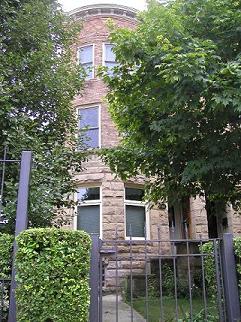
|
 
Eastsidedog
Member
Username: Eastsidedog
Post Number: 987
Registered: 03-2006
| | Posted on Tuesday, February 19, 2008 - 10:54 am: |    |
There's a really cool one for sale on Agnes, east of Parker. 
And a bunch of more rundown ones along Kercheval east of E. Grand Blvd in Islandview. Really the whole near east side has them interspersed all over between the apartment buildings and houses. |
 
Troy
Member
Username: Troy
Post Number: 218
Registered: 10-2003
| | Posted on Tuesday, February 19, 2008 - 10:57 am: |    |
same building just the cross street
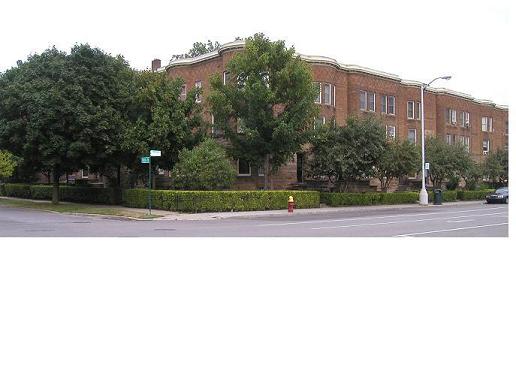
|
 
Royce
Member
Username: Royce
Post Number: 2552
Registered: 07-2004
| | Posted on Tuesday, February 19, 2008 - 12:09 pm: |    |
From the pictures from Dougw, the row houses in Lawrenceville I could live in. The rest you can have. I'm pretty sure that the ones in Philly are very old and open up to a court yard that is too small for cars to travel down.
(Message edited by royce on February 19, 2008) |
 
Shotcaller
Member
Username: Shotcaller
Post Number: 8
Registered: 02-2008
| | Posted on Tuesday, February 19, 2008 - 12:57 pm: |    |
12 or 13 feet multiplied by however many houses adds up (the space between 15 houses is the length of a short block). I'm just obsessed with space and density, can't help it. Call me an extremist, but I think cities should squeeze every dollar out of a square foot that they can to increase the tax base, and I'm also an extremist because of the environment. Like I don't think people deserve the amount of space they have on average. It's like China's one child policy, only with land (and without the torture). I care about green and green, call me Bloombergian. |
 
Masterblaster
Member
Username: Masterblaster
Post Number: 132
Registered: 03-2005
| | Posted on Wednesday, February 20, 2008 - 10:50 pm: |    |
THE NORTH END
IT ISN'T PRETTY
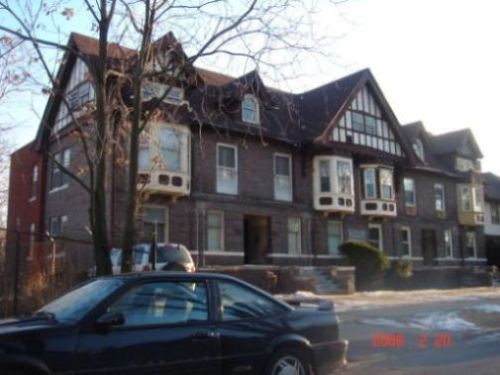
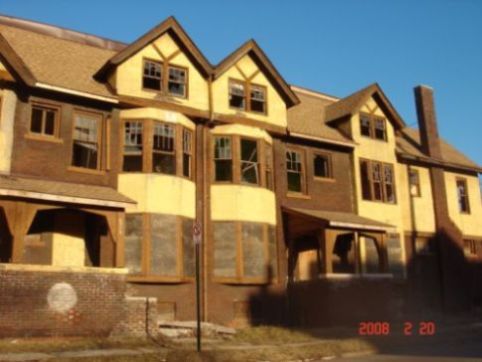
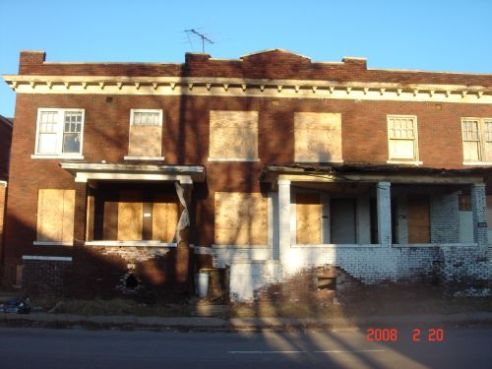
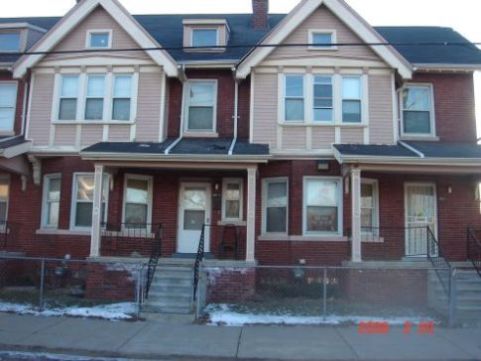
DEXTER-DAVISON
NOT PRETTY
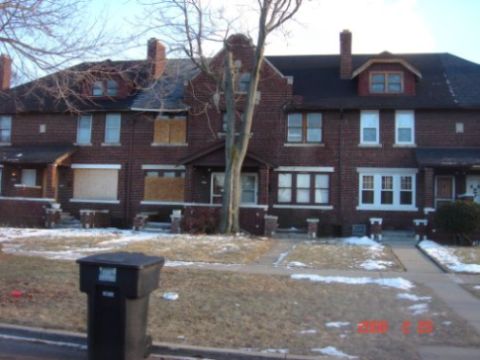
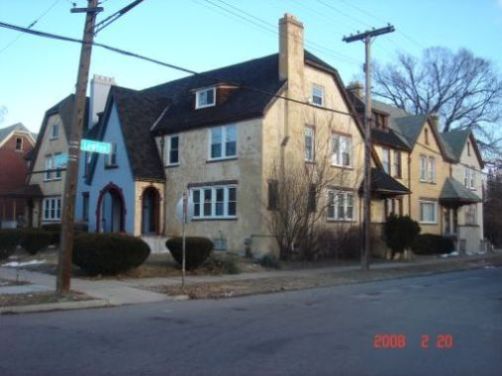
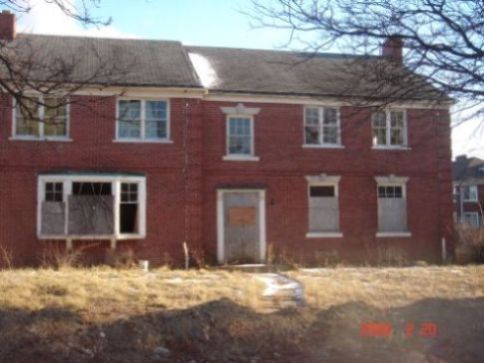
|
 
Detroitrise
Member
Username: Detroitrise
Post Number: 1651
Registered: 09-2007
| | Posted on Wednesday, February 20, 2008 - 10:52 pm: |    |
Such beautiful homes just rotting to pieces! |
 
Masterblaster
Member
Username: Masterblaster
Post Number: 133
Registered: 03-2005
| | Posted on Wednesday, February 20, 2008 - 11:02 pm: |    |
RUSSELL WOODS-SULLIVAN
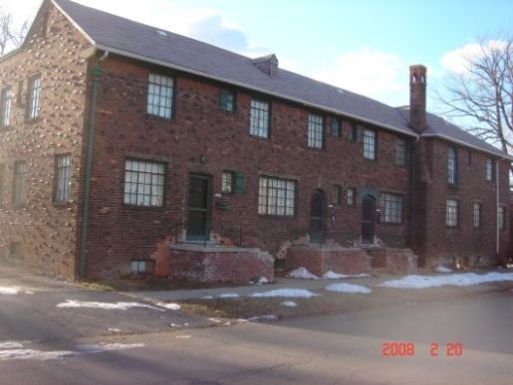
NEW CENTER
Good condition
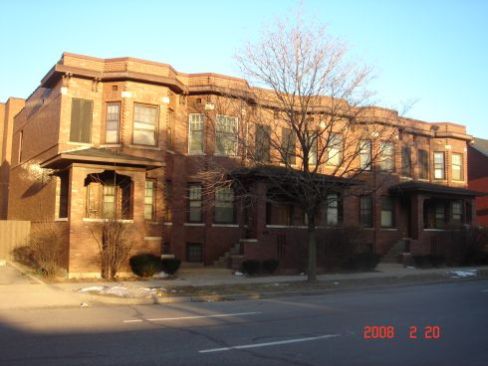
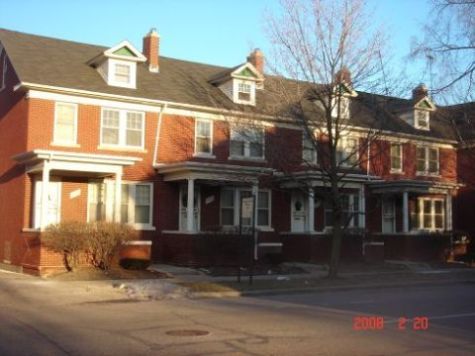
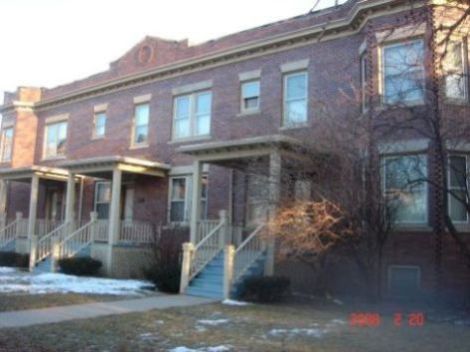
EWALD CIRCLE

|
 
Barnesfoto
Member
Username: Barnesfoto
Post Number: 4773
Registered: 10-2003
| | Posted on Wednesday, February 20, 2008 - 11:53 pm: |    |
In Detroit, they were called "Terraces". Prior to 1910 or so, you could have "party walls", i.e. no firewall in between the units...
My first place in SWD was a "terrace" unit built in the teens, and it had a brick firewall in between the units. Later I bought a unit in a building built in 1902, and discovered that there was no firewall, but rather a "party wall" and I could hear my neighbors snoring. I went out and bought some drywall pretty quickly. So much for the notion that developers 100 years ago built everything better.
Here's to a great invention of the 20th Century: Building Codes. |
 
Royce
Member
Username: Royce
Post Number: 2561
Registered: 07-2004
| | Posted on Thursday, February 21, 2008 - 3:10 am: |    |
Masterblaster, great pics. The first set of pictures taken in "New Center -Good Condition" are on Third Ave. They are the kind of row house or town home that I like - flat roof, all brick, and bays windows on the first and second floors. The only drawback that I have with these and many in the pictures of the Northend and the new ones at Woodward Place is the "side-facing" steps. I know for space constraints the front steps are turned to the side, but a good look for me is when each unit has its steps facing the sidewalk. The development "Nine on Third" could have learned something from mimicking these. However, the development would have to be called "Five on Third." |
 
Mackinaw
Member
Username: Mackinaw
Post Number: 4448
Registered: 02-2005
| | Posted on Thursday, February 21, 2008 - 9:06 am: |    |
This sort of higher-density housing can easily mix with housing of lower densities and areas of other uses. They can also coexist within "upscale areas." Notice all of the attached housing around the corner of Rivard and Maumee in GP (although only one corner truly has rowhouses, the other corners are more fanciful townhouses), along Jefferson near Roosevelt and Rivard, at Maumee and Notre Dame, St. Paul and Cadiuex, and Cranford at Cadiuex. Most of these are reminiscient of the townhouses in W. Village near Indian Village.
Good photos, Masterblaster. None of those are beyond the point where they cannot be rehabbed. |
 
Pffft
Member
Username: Pffft
Post Number: 1460
Registered: 12-2003
| | Posted on Thursday, February 21, 2008 - 9:33 am: |    |
The Philly rowhouses pictured way above are the real old ones, from Colonial times, and yes the streets were narrow. But there are also many rowhouses there from the late 19th century that are bigger, and look like the photos Masterblaster posted of the New Center rowhouses. The yards were still small (with an alley in back).
There are probably more of those Victorian era rowhouses in Philly than the Colonial ones; the latter are sometimes fixed up to the max though and draw top dollar. |
 
Mackinaw
Member
Username: Mackinaw
Post Number: 4450
Registered: 02-2005
| | Posted on Thursday, February 21, 2008 - 10:28 am: |    |
It's really only the more modern or overly-repetitious rowhouses in Philly that get a little old, but the colonial ones and the Victorian/early 20th century ones tend to be really nice, and in demand.
That city is constructed wholly differently than Detroit, but it certainly makes their detached-home neighborhoods stand out more. |
 
Treelock
Member
Username: Treelock
Post Number: 282
Registered: 03-2005
| | Posted on Thursday, February 21, 2008 - 11:10 am: |    |
There are some row houses in Pontiac just east of downtown on University, I think. Two rows facing each other with a common courtyard-type area in between, similar to the ones on Rosa Parks north of I-75. They looked to be in pretty rough shape last time I saw them. |
 
Eastsiderules
Member
Username: Eastsiderules
Post Number: 32
Registered: 01-2008
| | Posted on Friday, February 22, 2008 - 1:22 am: |    |
There were true row houses on John R, between Palmer and Ferry during the 80s while I attended WSU for undergrad and grad school. |
 
Ltorivia485
Member
Username: Ltorivia485
Post Number: 2975
Registered: 08-2004
| | Posted on Friday, February 22, 2008 - 3:35 pm: |    |
Single-detached family homes have always symbolized Detroit. This will not go away. We value our cars. Especially along the fringes of the city bordering the suburbs. I believe multi-story apartments and rowhouses could work in Detroit ONLY if there is high-density residential AND economic development in a particular neighborhood. Rowhouses and Multi-story apartments are excellent near universities and commercial buildings with a young adult population. The reason why these developments in cities such as Washington DC and Philly makes sense is because they have a mass transit system and a high-density population that supports and demands it. Redevelop the inner core of the city with a combination of multi-story apartments and rowhouses (especially near street corners and major intersections) to attract businesses and build single detached homes with bigger lots in more residential areas. Yes, the lots must be bigger to accomodate bigger rooms, larger yards and garage space. That's my 2 cents. |
 
Pffft
Member
Username: Pffft
Post Number: 1461
Registered: 12-2003
| | Posted on Friday, February 22, 2008 - 3:47 pm: |    |
It's not even a car issue, for me...having lived in a big east coast city and in Detroit, it felt so much more spacious here. I know the urbanists won't like this, but to see these large, beautiful houses with yards, in the city, was an incredible luxury. East coast cities seem to me crowded, lacking sun, a view of the sky and green spaces compared to Detroit. |
 
Mackinaw
Member
Username: Mackinaw
Post Number: 4454
Registered: 02-2005
| | Posted on Friday, February 22, 2008 - 5:29 pm: |    |
It is possible to have a rowhouse and a backyard.
Many of those east coast cities have exquisite--and much-utilized-- public parks to make up for a lack of a yard.
I prefer not having a front yard in an urban setting, but there should still be trees along the street in an urban residential area. Many of Chicago's high density neighborhoods and Brooklyn, of course, fulfill this, but some places do not, and I understand the feeling of being choked in a situation like that. |
 
Royce
Member
Username: Royce
Post Number: 2562
Registered: 07-2004
| | Posted on Friday, February 22, 2008 - 7:37 pm: |    |
Mackinaw, do you know if much-utilized public parks in Baltimore is a reality? I have never been to Baltimore, but I remember reading a "special report" done by the Baltimore Sun about a decaying neighborhood in Baltimore. In that report the paper showed a diagram of all the "vacant" row houses in the neighborhood. There was no park diagrammed anywhere. Also, there were a few pictures showing the narrow side walks and homes with no porches, where kids played in inflatable pools right on the side walks.
Now, as residents wondered what to do about all the vacant row houses, the first think that came to my mind was, "Tear down those homes that can't be saved and sell the land for wider yards for the homes that still exist; also, create playgrounds where several vacant row houses used to be, especially at the corners of the blocks."
Creating green space and recreational areas can help the people in inner-city Baltimore solve the problem of what to do with all of their vacant row houses, while giving them a better quality of life, thanks to some Detroit urban planning. Who would have thunk it? |
 
Mackinaw
Member
Username: Mackinaw
Post Number: 4456
Registered: 02-2005
| | Posted on Friday, February 22, 2008 - 8:48 pm: |    |
Hmmm, look at the Detroit landscape right now. I'm pretty sure Baltimore is not looking to duplicate that. I wasn't neccesarily speaking with Baltimore in mind, but let's not forget all the successful rowhouse neighborhoods they have.
The lesson is, you need variety. The central neighborhoods of Detroit had that, before they got torn up. Detroit may have been short on the rowhouses, but, in the pre-urban prairie era, we had plenty of neighborhoods with duplex homes stacked right up against each other, without driveways between them, that rendered effectively the same density as rowhouses. This landscape is still extant in Hamtramck. There is absolutely nothing wrong with a 30 foot setback and large backyard for a single-family home in a city, but one would expect that this is not the norm. The problem was that once we got in the 1920s, really nobody thought about constructing housing at with standard urban density, and almost all neighborhoods after that point are single-family detached homes. And yes, the quality of life was good. Then something happened to this city... |
 
Ltorivia485
Member
Username: Ltorivia485
Post Number: 2978
Registered: 08-2004
| | Posted on Friday, February 22, 2008 - 10:50 pm: |    |
Mackinaw, I understand your perspective. But we must realize that this is the 21st century. Most families own more than one car, especially in Detroit. Just having A car in the 1930s was a luxury. Many people in Detroit prefer to live in a place that is car-friendly. Even some apartments and condominiums have garages or multiple parking spots for cars. Some places have solved this by creating underground parking to accomodate high-density development. |
 
Mackinaw
Member
Username: Mackinaw
Post Number: 4458
Registered: 02-2005
| | Posted on Saturday, February 23, 2008 - 1:00 am: |    |
Cars perpetuate outward growth. With the lack of natural barriers to growth around here (landforms), and with all of the extra prejudice that comes with this region, the car allowed people to build exactly what they wanted: a low-density suburban dreamscape of wide avenues and big backyards, even though the CITY ITSELF already provided this to a great extent. Like I said, Detroit had (has) variety, and most of its non-central neighborhoods did allow people plenty of breathing room. Yet, people walked away from it.
I guess the conclusion is that the physical makeup of a city does not determine whether there will be an urban crisis of massive proportions or not. But, the car culture, and lack of transit, is certainly hindering this city's attempt to bounce back.
While it would be fine if much of Detroit were rebuilt in the manner it was originally built, we should try to plan for higher density and transit, to overcome the crisis sooner than later, and make the City as functional as possible, with as many options for living as possible. |
 
Royce
Member
Username: Royce
Post Number: 2564
Registered: 07-2004
| | Posted on Saturday, February 23, 2008 - 1:20 pm: |    |
Then, Mackinaw, we must all pray that gas prices skyrocket to stop continued outward growth or our representatives in Congress must convince the government to give Detroit billions of dollars to rebuild. "Dear, Lord...." |
 
Jjaba
Member
Username: Jjaba
Post Number: 6154
Registered: 11-2003
| | Posted on Saturday, February 23, 2008 - 3:09 pm: |    |
jjaba lived on Ewald Circle, 1964 era. At the time, it was an apartment row house neighborhood, very lovely. It runs from Livernois to Dexter Blvd. and jjaba lived in a unit on Petoskey actually. He could easily walk to Dexter Blvd. to catch the bus to Wayne State Grad. school. Rent was $85/mo.
It still looks nice, some 40 yrs. later.
jjaba, Proudly Westside. |
 
Savannahsmiles
Member
Username: Savannahsmiles
Post Number: 68
Registered: 05-2005
| | Posted on Wednesday, February 27, 2008 - 9:43 pm: |    |
Jjaba, my folks lived on Petoskey back in the 60's. Does the name Whited ring a bell? |
 
Hpgrmln
Member
Username: Hpgrmln
Post Number: 380
Registered: 06-2007
| | Posted on Thursday, March 13, 2008 - 8:04 pm: |    |
I just saw some unusual apartments, and I'm wondering if they qualify as rowhouses. Theyre 1 story. 6700 block of Cadillac, Warren, and the north side of Ford across from Hupp Park |
 
Jsmyers
Member
Username: Jsmyers
Post Number: 1955
Registered: 12-2003
| | Posted on Friday, March 14, 2008 - 3:46 pm: |    |
quote:rowhouses ... are less like to be maintained by their occupants
What!?! There is no evidence to support that statement whatsoever.quote:mass transit was effective for decades, despite suburban sprawl, and is still sustained in places like D.C. (hardly a compact area) DC is dominated by row houses. |
 
Jsmyers
Member
Username: Jsmyers
Post Number: 1956
Registered: 12-2003
| | Posted on Friday, March 14, 2008 - 4:02 pm: |    |
quote:Royce, one of my favorite rows of townhouses is that row of ± 10 Tudor style homes on Ewald Circle and Schoolcraft. The row follows the curve of Ewald Circle. You might like them because they are set back some distance from the sidewalk, providing for deep front lawns. There are several rows of similar, though much smaller and less impressive, townhouses across the street.
Those do kick ass. I've never seen them in person:
http://maps.live.com/default.a spx?v=2&cp=r1yc9j8242xt&style= o&lvl=2&tilt=-90&dir=0&alt=-10 00&scene=5635897&encType=1
quote:The row houses I mentioned earlier, off of the Jeffries/Ford interchange, is on Hudson Street.
http://maps.live.com/default.a spx?v=2&cp=r1rk47827bkz&style= o&lvl=2&tilt=-90&dir=0&alt=-10 00&scene=5645994&encType=1
quote:Aren't there some rowhouses on Lasalle Boulevard? Seems like I've seen them while driving along Davison and I've been meaning to turn down the street to take a look and have never gotten around to it. Maybe:
http://maps.live.com/default.a spx?v=2&cp=r1z3z88261gp&style= o&lvl=1&tilt=-90&dir=0&alt=-10 00&scene=5636053&encType=1
quote:This sort of higher-density housing can easily mix with housing of lower densities and areas of other uses. They can also coexist within "upscale areas." Notice all of the attached housing around the corner of Rivard and Maumee in GP (although only one corner truly has rowhouses, the other corners are more fanciful townhouses)
http://maps.live.com/default.a spx?v=2&cp=r1y6jk82qycs&style= o&lvl=2&tilt=-90&dir=0&alt=-10 00&scene=5637270&encType=1
quote:along Jefferson near Roosevelt and Rivard
http://maps.live.com/default.a spx?v=2&cp=r1xv1j82r3kq&style= o&lvl=2&tilt=-90&dir=0&alt=-10 00&scene=5637255&encType=1 |